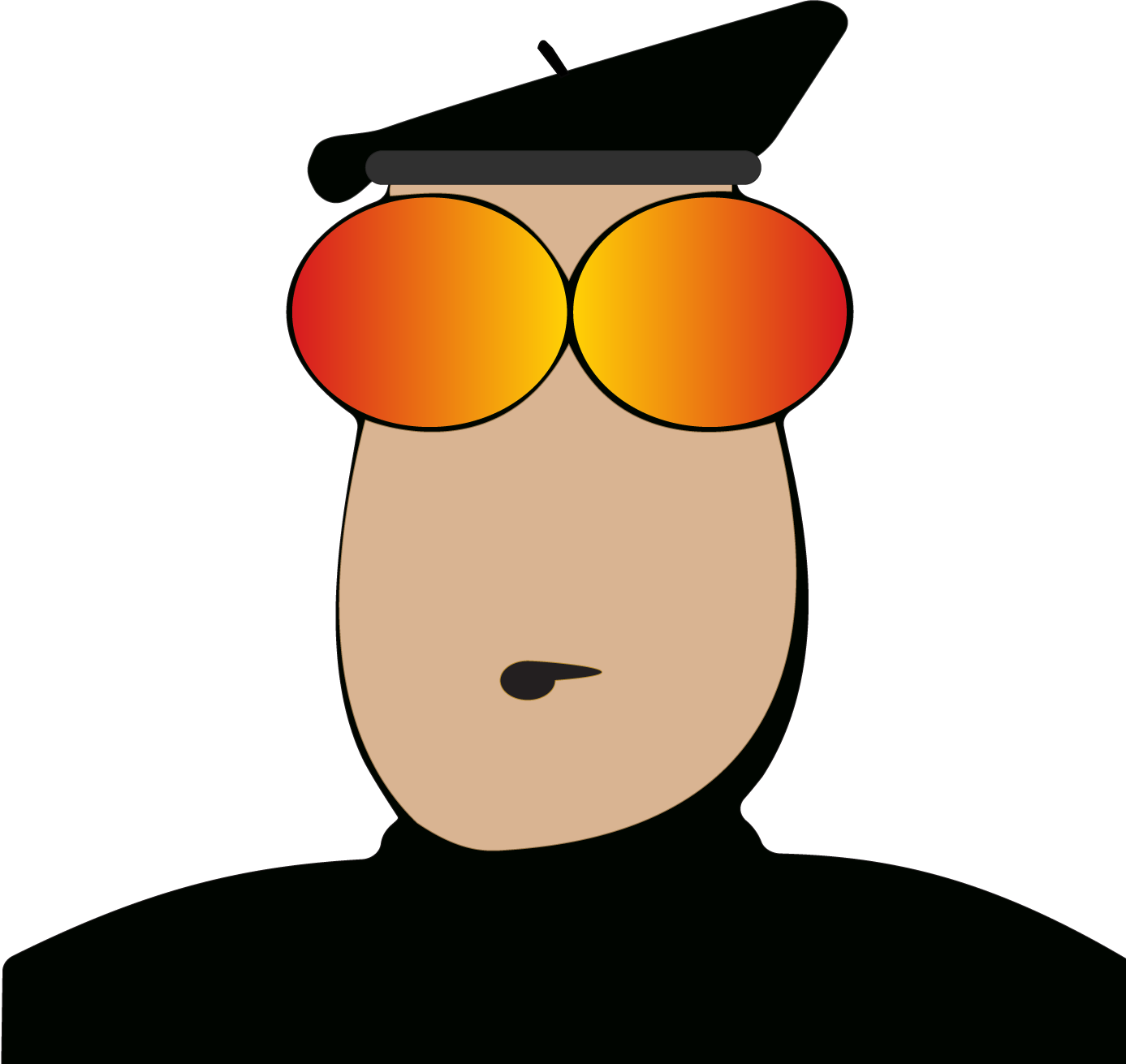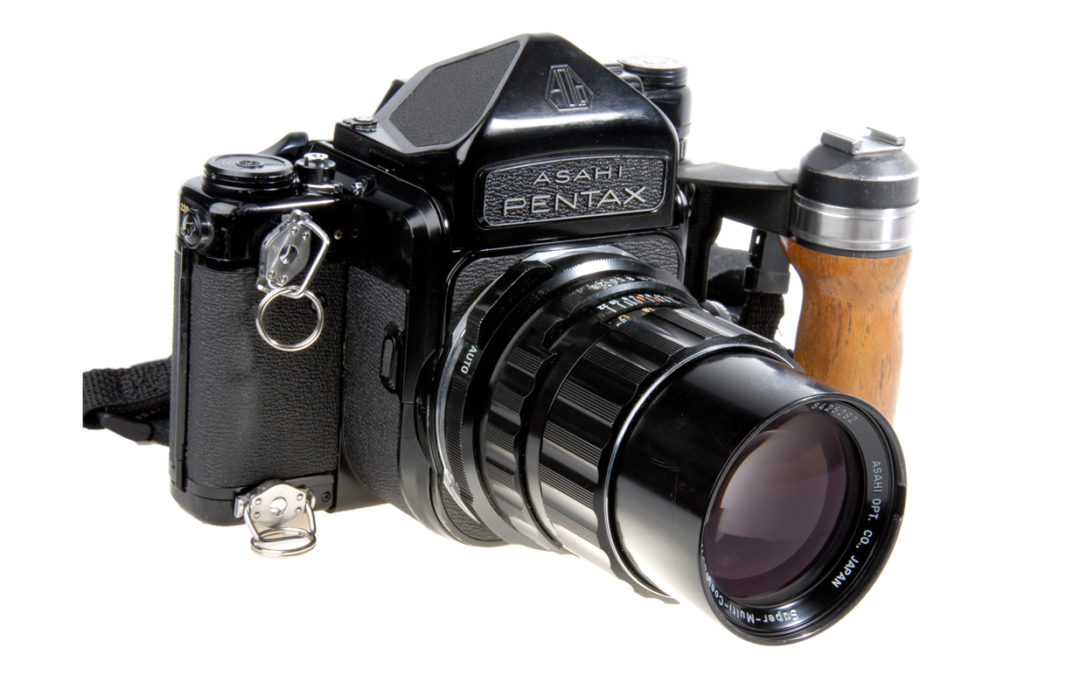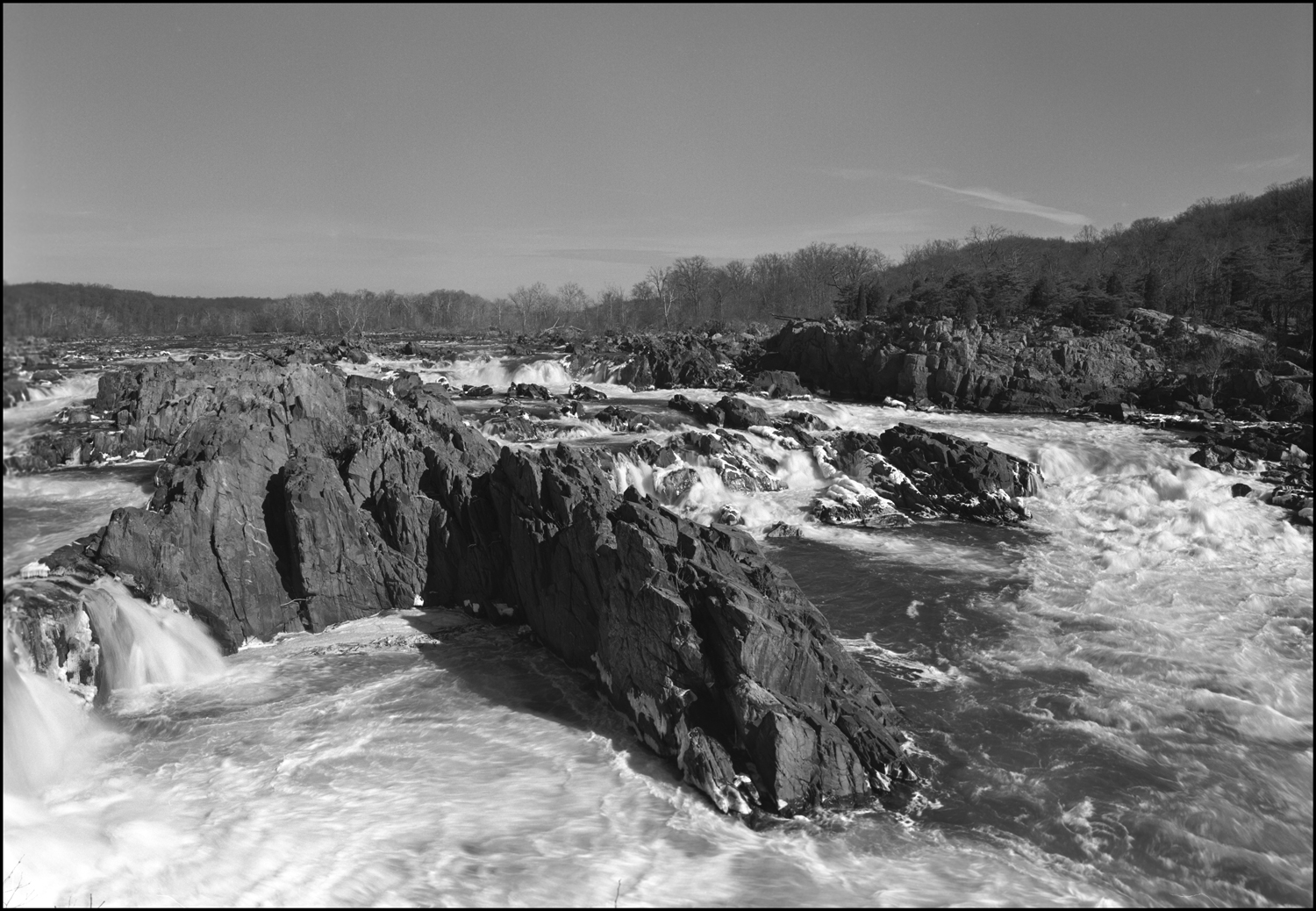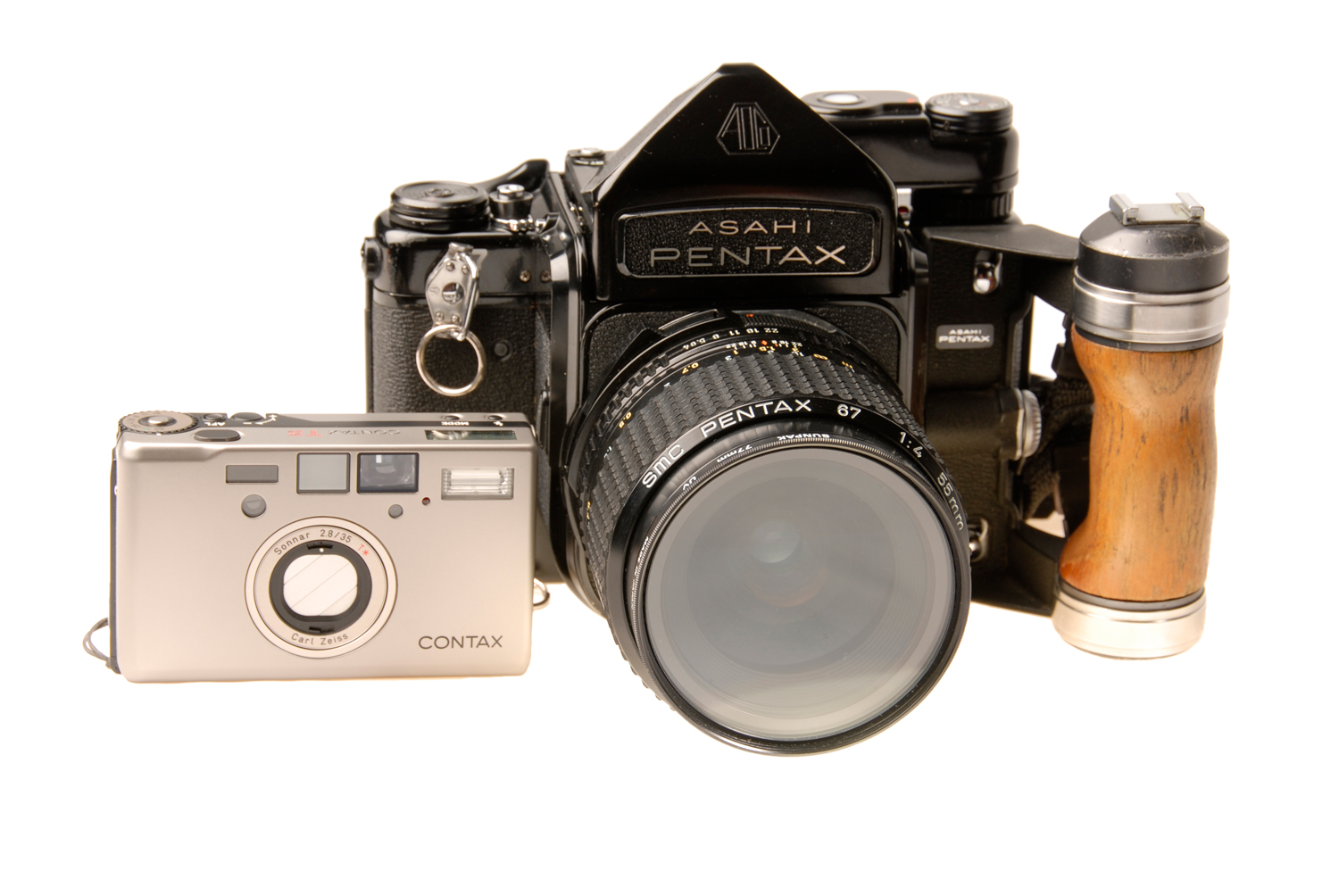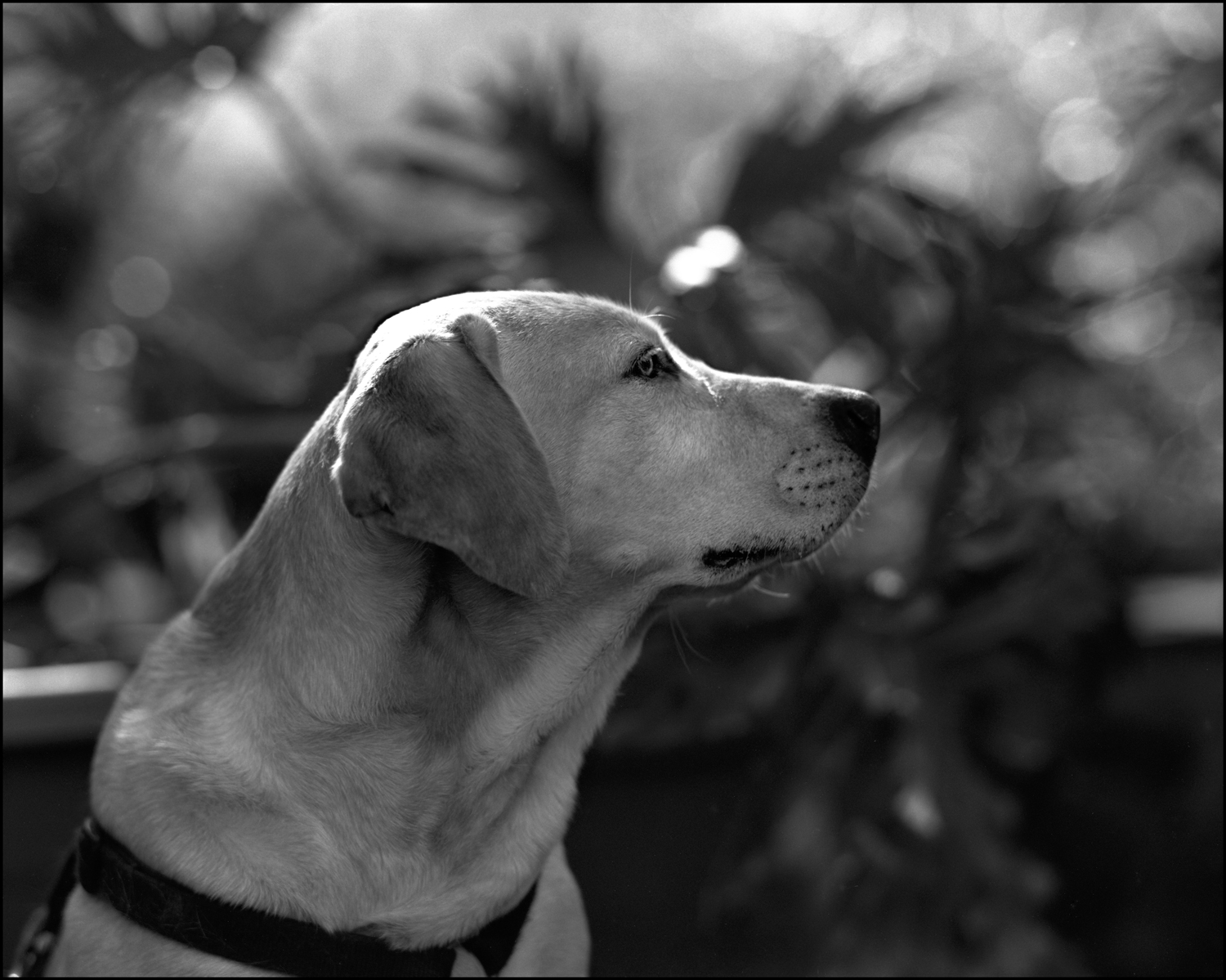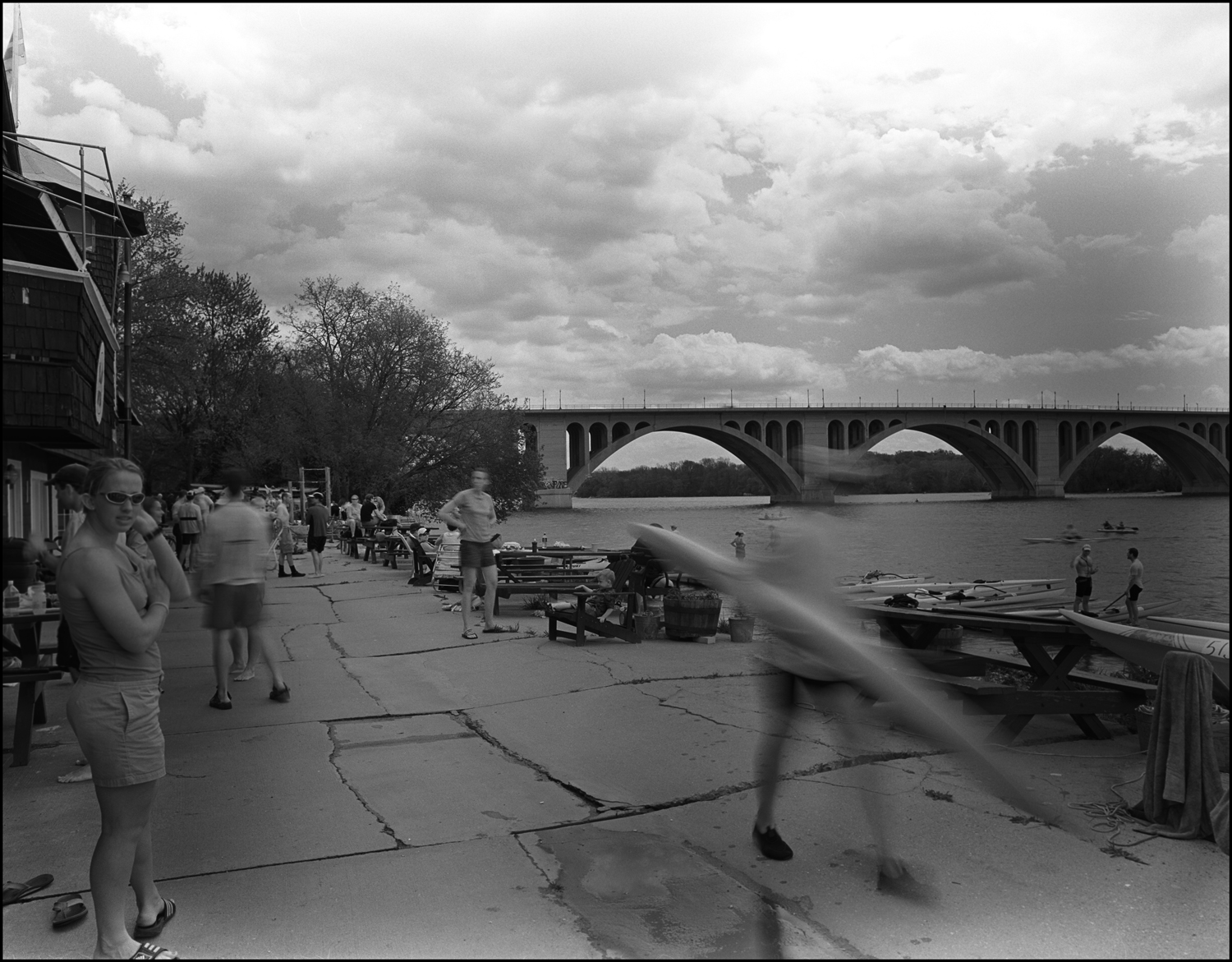First impressions encourage one to hand hold this mammoth but doing so is not for the weak or faint-of-heart. If you have a medical condition, I suggest you consult your physician before carrying this camera around with you on a shooting spree.
Although it resembles a 35mm SLR on growth hormones, the Pentax 67 is first and foremost a studio camera. To give you some indication of its size I’ve photographed it together with a Contax T3, but even that image fails to convey the camera’s true bulk and heft.
I have toted the Pentax 67 with me on several Washington, DC walkabouts. When I do take it for a stroll I use a wide, springy strap and the attachable hand grip. Due to its weight, I find myself constantly rotating the camera from one shoulder to the other or from my neck to my shoulders. This camera too long hanging from your neck or shoulder soon causes pain. I honestly lift weights to increase my strength and endurance so I can effectively wield this behemoth.
I get good hand-held results with the Pentax 67 but it takes finesse. It’s the mirror that concerns one most; it generates a significant amount of camera shake as it loudly goes “ker-thwap” against the viewfinder prism. In practice, I get good hand-held images when shooting at shutter speeds equal to or greater than 125th of a second; anything below that and I must use a tripod.
I sometimes employ another shooting technique to further improve hand-held image quality; I use the mirror lock-up feature to move the mirror up and out of the way right before taking the shot. This works best when using a wide angle lens as the camera inevitably moves out of place, if only a little, in the time it takes to lock the mirror and take the photograph. I always use the mirror lock-up feature when shooting with a tripod.
The Pentax 67 system boasts an incredible selection of lenses, more than any other medium format system. My favorites include the 55mm f4, the 105mm f2.4, and the 75mm f4.5 shift.
